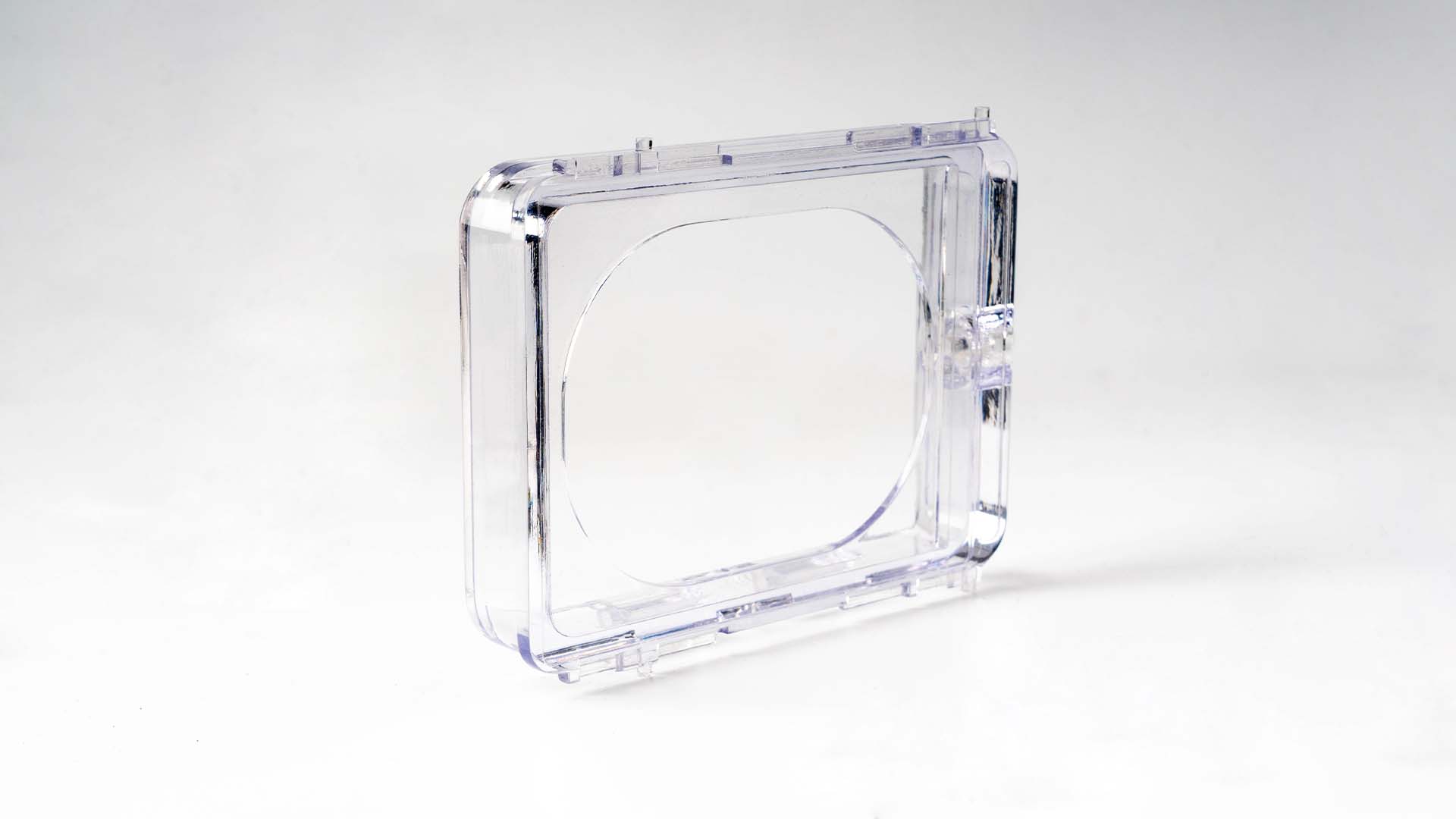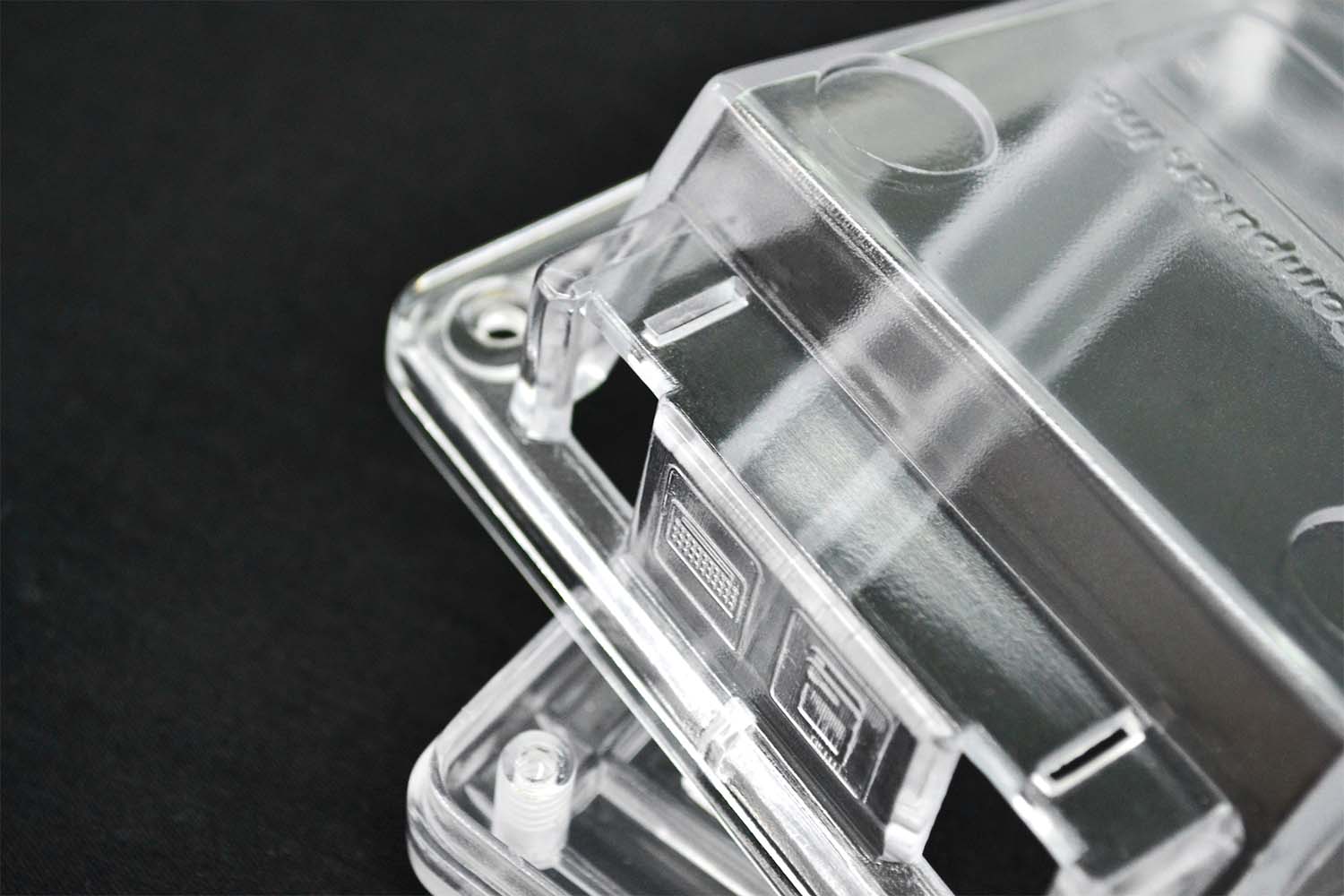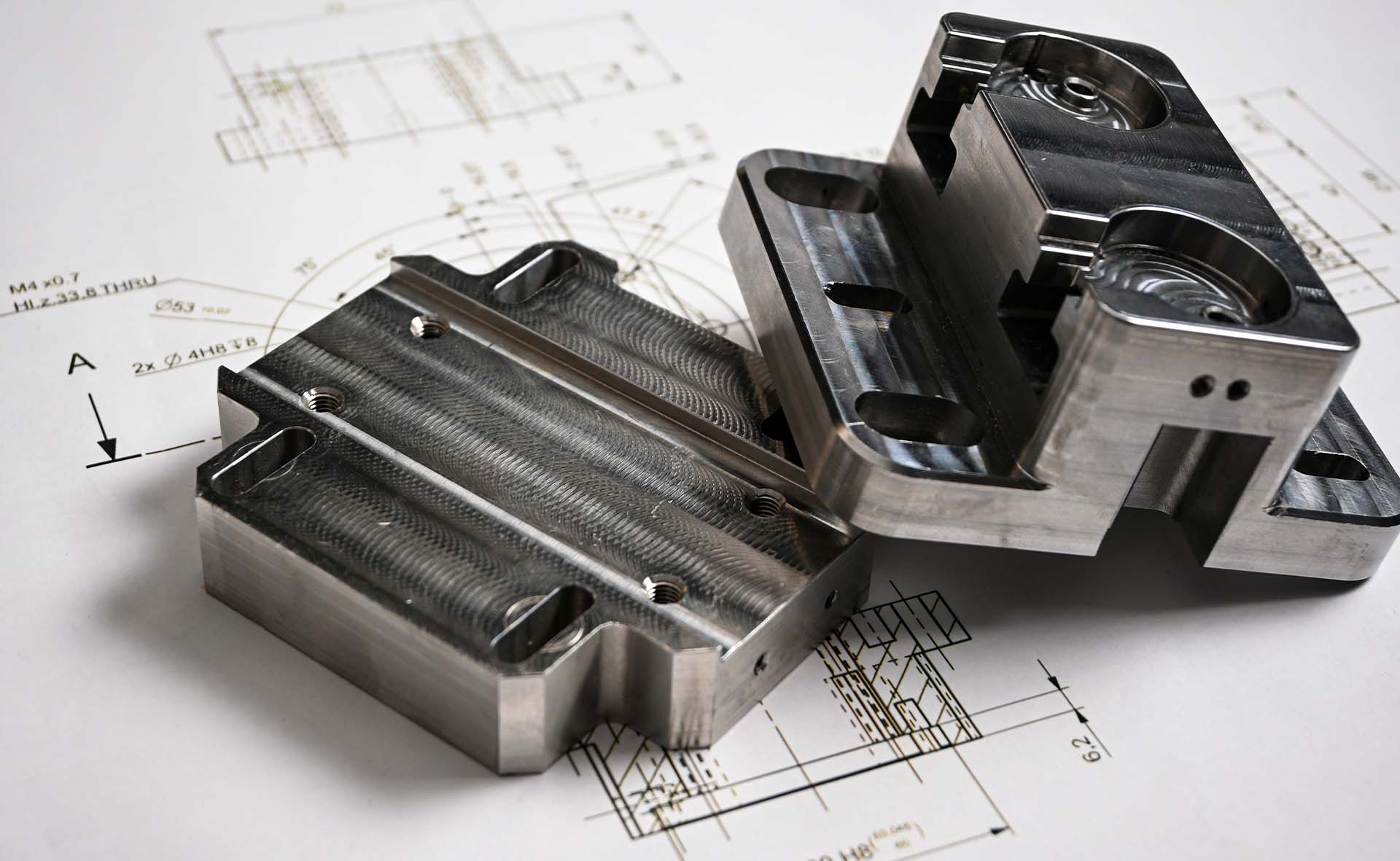Clear parts and prototypes serve a wide variety of purposes. You may need it for visibility purposes, to allow for the transmission of light, or purely for aesthetic reasons. Are you looking to produce clear custom parts and prototypes? Here are a range of technologies and materials you could consider.
If the geometry and quantity range is suitable, CNC machining would be our preferred manufacturing method for creating optically clear parts. The two main material options are polymethyl methacrylate (PMMA or acrylic) and polycarbonate (PC), both of which have very high transmissivity.
PMMA — often referred to as a lighter alternative to glass — is the most popular clear CNC material. It is easy to machine and polish, can be polished to restore clarity, and is extremely scratch resistant. These properties make acrylic ideal for optical devices and aesthetic prototypes and models.

PMMA part by @hlhrapid
If you observe closely, PC parts appear slightly purple in color. While it offers lower machinability and requires more extensive polishing to produce good transparency, PC material has higher impact resistance than PMMA and is a great choice for more demanding applications such as making riot shields.

PC part by @hlhrapid
It is worth noting that the CNC process may require splitting the design into multiple sections to machine and then joining them together with glue. Although this can be done to a very high level by professional model makers, there is still going to be a visible join and an inherent weakness.
Another factor to consider is the complexity of the part. It is difficult to hand polish parts with hard-to-reach areas. Hence, the results for such parts may not be as good.
In the injection molding process, the surface texture is directly transferred onto the injection molded part with little to no post-processing needed. The process allows you to move away from hand polishing each piece. As quantity increases, this means more efficiency and consistency. Though the initial investment of tooling is costly and more time-consuming, once the tooling is in place, it is easy to make 100 to 10,000+ clear parts.

PMMA part by @hlhrapid
PC and PMMA are again the two main materials of choice. Injection molding also offers a range of other translucent materials as well as plastics that offer good transparency, including clear ABS, PE, PP, and PVC.
A potential problem with injection molding clear parts is that air bubbles — sometimes referred to as gas traps or blisters — may form, detracting from the looks of the part. Such cosmetic defect is not an issue for a process like CNC machining.
3D printing is amongst the fastest, easiest and cheapest way to make clear parts. It is excellent for lower quantities (especially one-off prototypes). Although there are great restraints to the degree of clarity that can be achieved, it offers plenty geometrical freedom and can produce high resolution parts, making it desirable for creating truly aesthetic parts, structures and display models. At HLH, two additive manufacturing technologies can be used to achieve clear parts and prototypes: SLA and MJP.

Crysta-8QEF1 part by @hlhrapid
SLA or Stereolithography is one of the earliest and the most versatile 3D printing technologies. Clear ABS, Godart 8001 and Crysta-8QEF1 are materials that our SLA service offers here at HLH. It is worth noting that SLA parts are often weak and brittle and, therefore, only suitable for display models and aesthetic prototypes.

MG2-CL part by @hlhrapid
Though still fairly new, MJP is a 3D printing technology capable of printing in ultra-high-definition mode. It uses a VisiJet Armor M2G-CL material which has a great balance of strength and toughness with a clear aesthetic. This makes it excellent for not just aesthetic prototypes but also for functional parts.
With most 3D printing, however, post-processing is necessary to achieve the desired results. Transparent printing is no different. In fact, extensive manual processing is required after printing to get a clear finish, which can greatly add to the cost.
Vacuum casting, also known as polyurethane casting or urethane casting, uses PU resins, including PX-5210 and PX-520 materials, designed to replicate other production plastics like PMMA and PC. While inferior to true PC and PMMA materials, such resins have good transparency and UV resistance.
By getting an impeccable surface finish on the master used to cast the tool, you’ll be able to produce excellent clear results. This also means the process does not require as much manual labor as CNC machining or additive manufacturing do. As such, vacuum casting is not only quick, but often a cheaper way to obtain 5 to 25 clear parts.
Other benefits include the ability to cast huge or intricate components in a single piece rather than splitting the parts into multiple sections.
Are you deciding between which technologies and materials to use to create clear custom parts and prototypes but are unsure where to start? A good place to start is by determining the quantity needed and considering the degree of clarity required for your parts. Other points to establish include:
Drop us an email at info@hlhrapid.com or upload your design using our Get in Touch form, and an expert from our team will provide you with advice.
